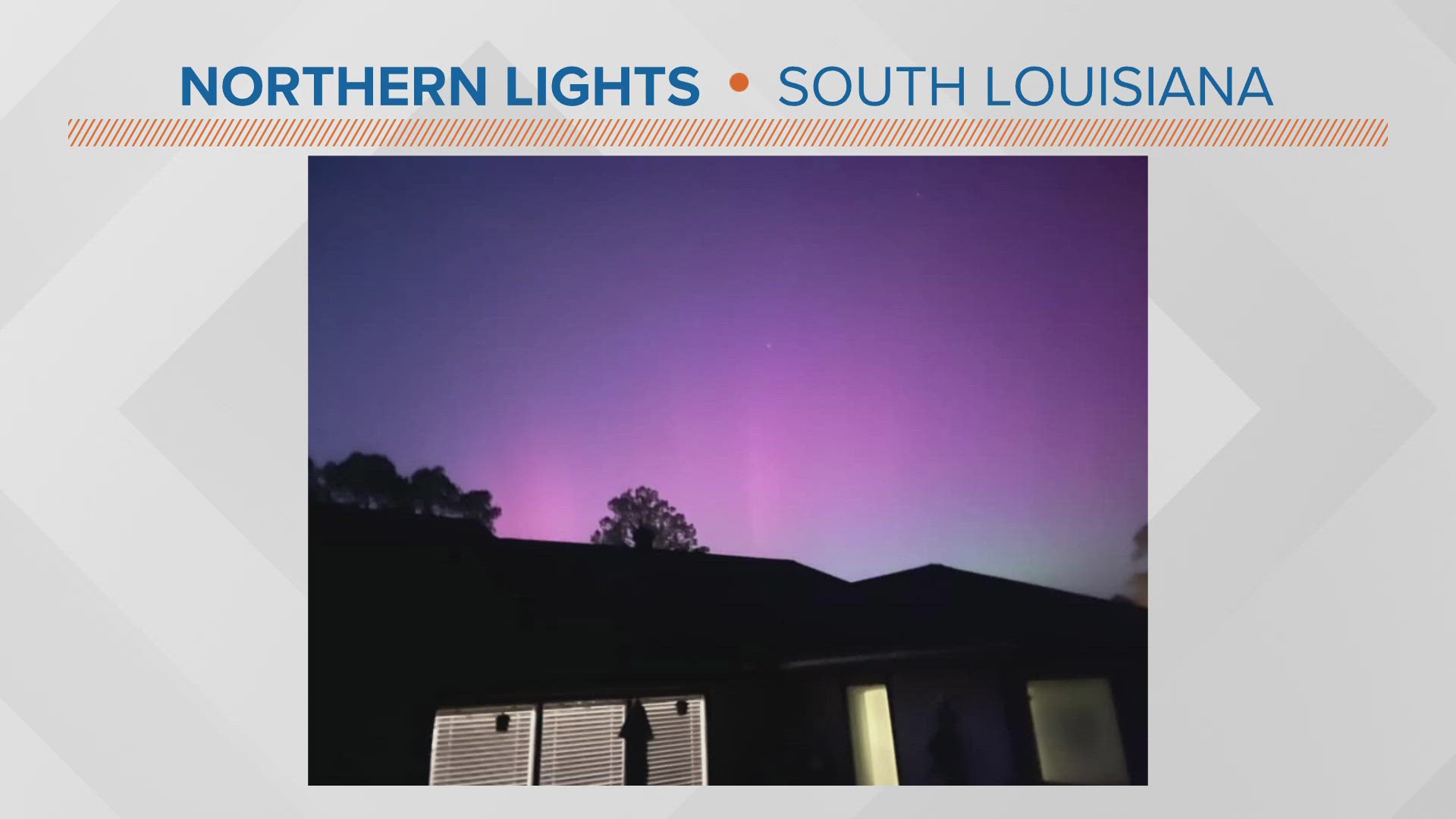NEW ORLEANS — Saturday night and early Sunday morning present another rare opportunity for Southeast Louisiana to see the Northern Lights as the United States observes the impact of a solar phenomenon, although this time weather might be an obstacle.
"You can most likely see them again tonight if you look north away from city lights between 9 p.m. and 3 a.m.," WWL Louisiana Meteorologist Alexa Trischler said Saturday morning. "However, there will be more clouds moving in late tonight which could impact the viewing."
Usually confined to sparsely populated places inside the Arctic Circle like Alaska, Greenland and Siberia, the Northern Lights were visible way down yonder in Southeast Louisiana Friday night as most of the United States and Canada witnessed the impact of a rare solar phenomenon.
People who live in St. Tammany Parish, Lafourche Parish and South Mississippi posted their photos of the spectacle on social media.
While the light show has been expected away from the city and into the Northshore, WWL meteorologists have said there are no guarantees.
Also known as aurora borealis, the light shows happened after geomagnetic storms made a near-Earth orbit. Solar flares and coronal mass ejections were the main components of these storms; these phenomena shoot magnetic field and plasma from the outer atmosphere of the sun.
Originally projected to be a less intense G4 storm, the National Oceanic and Atmospheric Administration classified Friday nights storms as a G5 -- the government agency's maximum rating. Like hurricanes, geomagnetic storms are rated from one to five in intensity.
According to NOAA this was the first time since 2003 that those conditions had been observed by the U.S. government agency.
"Extreme G5 conditions reached Earth at (5:54 p.m.)," NOAA said Friday. "Geomagnetic storming is likely to persist throught the weekend as several additional Earth directed Coronal Mass Ejections are in transit."
NOAA said they had been monitoring the flares since Wednesday morning when at least five flares appeared to have been directed toward Earth
Historically, the flares have also caused navigation issues and power grid problems. When the G5 was observed in 2003, Sweden had power outages and transformers in South Africa were damaged, according to NOAA.
"Critical infrastructure operators have been notified," NOAA said on Friday.
No major infrastructure issue had immediately reported any impact from the solar storms.

